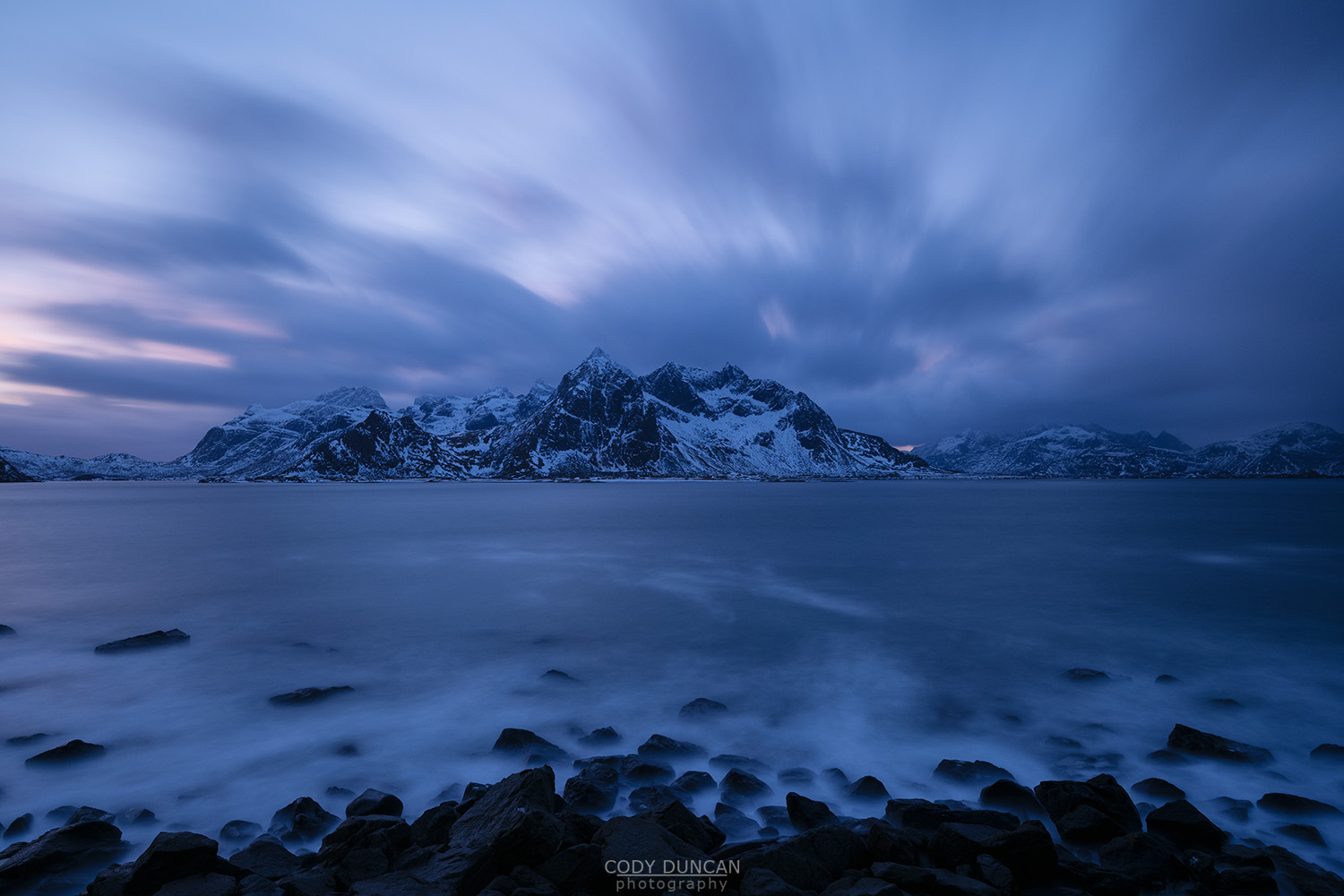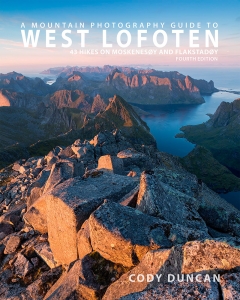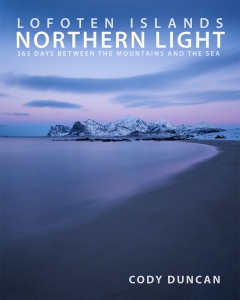
Photo: Himmeltindan rising over Storsandnes beach during the polar night, Flakstadøy, Lofoten Islands, Norway. December 20, 2019. 11:38
The brightest hour on the darkest day, or there about. With a clear sky it is only a soft twilight which shines over Lofoten during the winter solstice. Tomorrow, the sun will reach its lowest point in the sky before the circle north begins again in the never ending ebb and flow of days and nights north of the arctic circle.
I don’t do well during the Polar Night – I am much more a summer person! The endless darkness feels like a smothering blanket at times. And this year’s consistently bad weather hasn’t helped – there is nothing fun about doing mechanical work on your vehicle in gale force winds and sideways rain. Fingers frozen, plastic brittle, and working by headlamp even at noon. In summer, I could work at any time of day whenever the weather improved, in winter, the moments are short and fleeting, and can be weeks in between. I actually had to drive to a friend’s house in Leknes to do some mechanical work the other week because the weather at my house and been endlessly stormy.
But when the sky does finally clear and the wind stops blowing the world can feel quite silent, almost like it is asleep. These soft, muted blue tones are all the fill the world on the northern side of the islands, with snow covered mountains rising towards the sky. These mountains that will be the first ones to greet the sun on its return to Lofoten next month. The seaside elevations will have to wait a few days longer, but eventually shadows will fall across the beaches again as well.
Camera Info:
Nikon D850
Nikon 24-70mm f/2.8
32mm
ISO 64
f 11
30 Seconds
WB Daylight
6 stop ND filter












